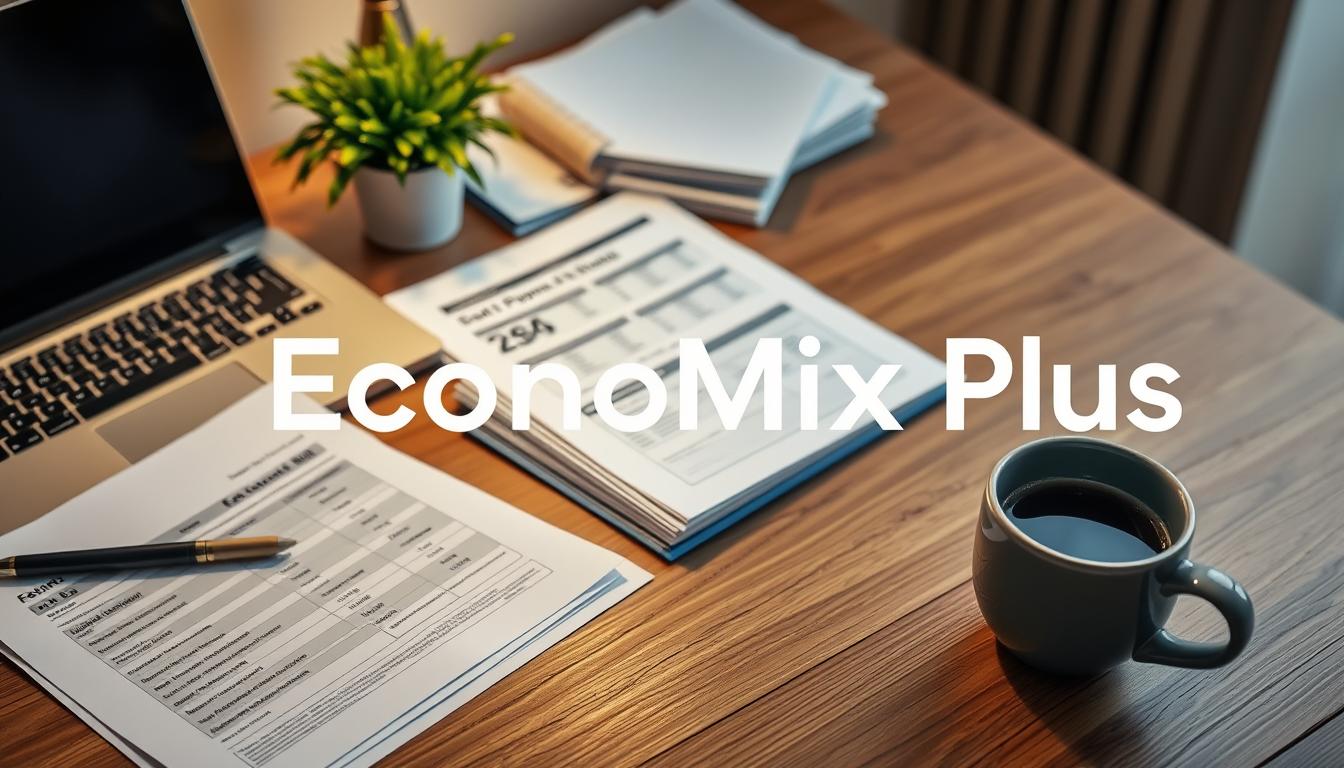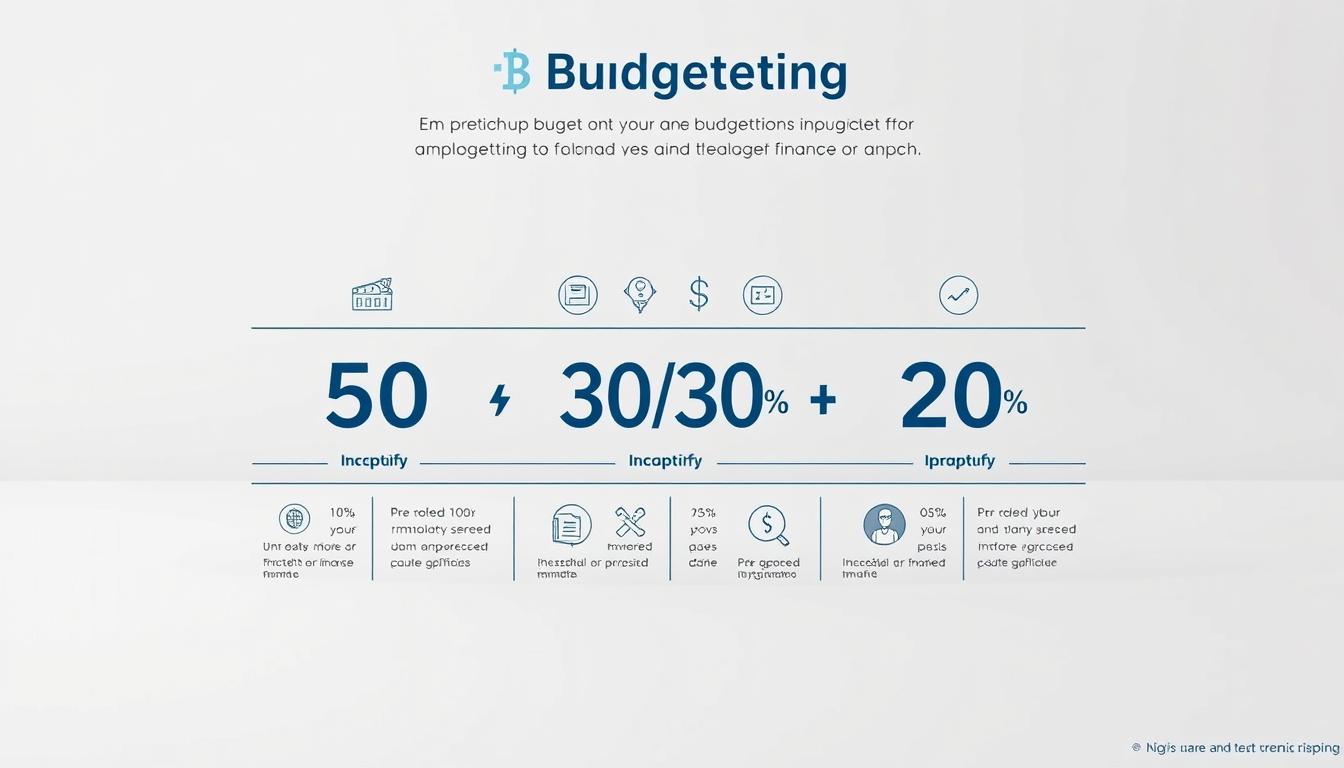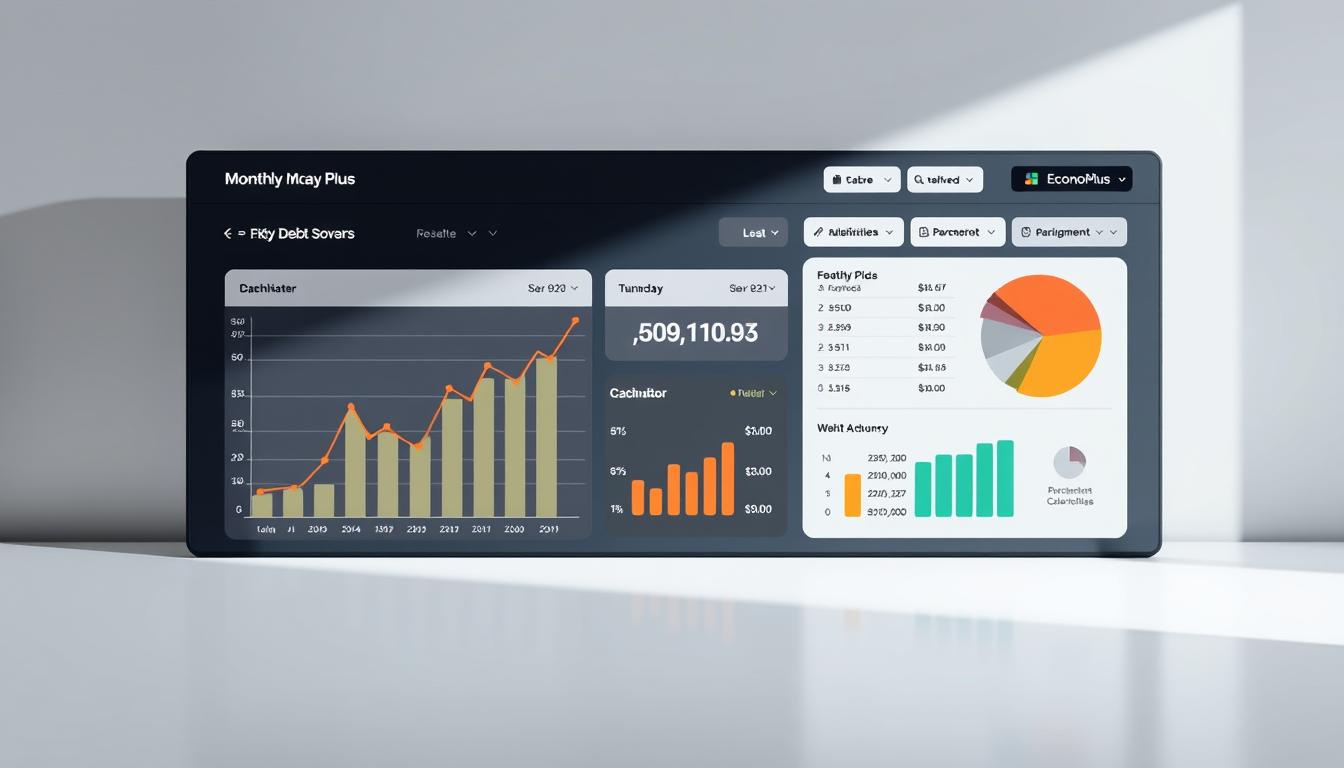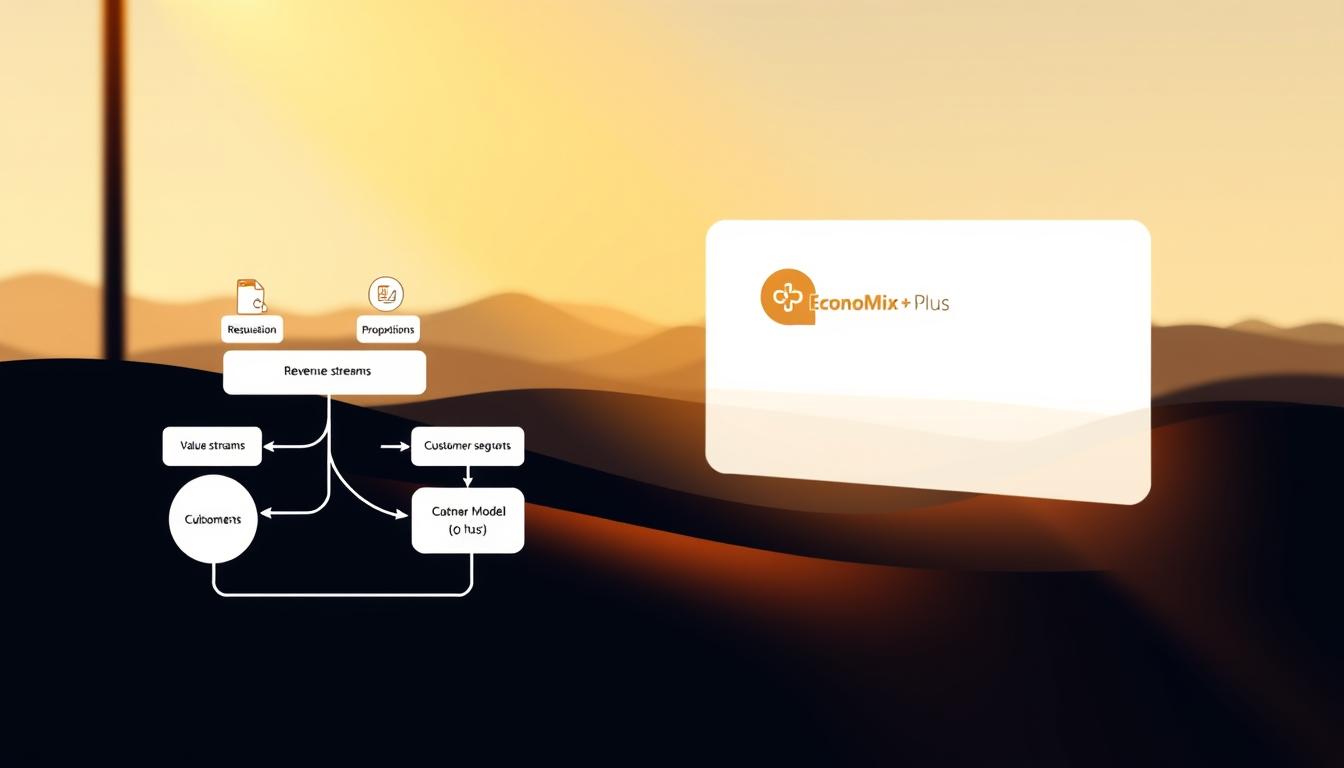What if your current debt strategy is costing you thousands in hidden interest? Many Americans struggle to balance their income with debt payments, often overlooking simple yet powerful budgeting methods. Understanding your financial flow is the first step toward lasting freedom from debt.
Financial experts like Bola Sokunbi, featured on CNBC Select, stress that paying more than the minimum can dramatically reduce interest over time. This approach requires a clear view of your earnings and obligations. For example, the 50/30/20 rule—allocating 50% to needs, 30% to wants, and 20% to savings or debt—creates a flexible framework without complicated tools.
This article focuses on practical steps, avoiding interest-based savings promotions. You’ll learn how to assess your finances, prioritize high-interest debt, and set realistic goals. Let’s turn your monthly income into a tool for progress.
Key Takeaways
- Prioritize high-interest debt to minimize long-term costs
- Track income and expenses to identify repayment opportunities
- Use the 50/30/20 rule as a flexible budgeting guideline
- Avoid minimum payments to accelerate debt reduction
- Align financial habits with clear, measurable goals
Understanding Your Financial Landscape
What does your financial snapshot reveal? Clarity begins with mapping every dollar you earn and owe. Start by listing all income streams—salaries, gig work, or side hustles. Subtract taxes and deductions to find your true net income. This number determines how much money you can realistically direct toward debt payments.
Identifying Your Income Sources
Track irregular earnings like bonuses separately from fixed wages. For example, freelance workers might use 70% of variable income for expenses and allocate 30% to debt. Apps like Mint simplify tracking without relying on interest-based savings tools.
Assessing Your Debt Obligations
List every debt—credit cards, student loans, mortgages. Prioritize high-interest credit balances first. Mortgage lenders recommend keeping housing payments below 28% of gross income. Compare this to your current obligations to spot adjustments.
Separate needs (rent, groceries) from wants (streaming services, dining out). This distinction helps free up money for effective debt management. Detailed tracking exposes patterns—like overspending on entertainment—that sabotage repayment plans.
Understanding these elements creates a foundation for smarter choices. You’ll know exactly where your credit stands and how to optimize expenses for faster progress.
Budgeting Basics for Debt Repayment
Building a strong financial foundation starts with intentional spending habits. The 50/30/20 rule offers a straightforward framework: divide your net income into needs (50%), wants (30%), and savings or debt repayment (20%). This structure helps balance essentials while chipping away at balances.
The Role of the 50/30/20 Rule in Your Budget
CNBC Select data shows most households overspend on non-essentials like dining out or premium subscriptions. By limiting these to 30% of your income, you free up funds for high-priority obligations. Allocating 20% directly to debt repayment creates consistent progress—$400 monthly from a $2,000 paycheck could eliminate a $5,000 credit card balance in 14 months.
Creating a Realistic Spending Plan
Track every dollar for two weeks to identify leaks. Groceries and utilities stay in the 50% needs category, while gym memberships or streaming services fall under wants. “Even $50 extra monthly on high-interest credit card debt saves hundreds in interest,” notes financial planner Rachel Podnos.
Adjust gradually—reduce dining out by one meal weekly instead of cutting entirely. This sustainable approach helps maintain your budget without resentment. Pair these changes with automatic payments to ensure your spending plan works while you focus on daily life.
Prioritizing Debt Payments Without Compromising Essentials
Debt doesn’t have to overshadow basic needs—strategic planning keeps both in check. Start by separating critical expenses like rent and insurance from flexible spending. This approach ensures you meet obligations without sacrificing essentials.

Distinguishing Between Needs and Wants
Needs include housing, utilities, groceries, and healthcare—expenses that sustain daily life. Wants cover streaming services, dining out, or luxury purchases. Mortgage experts suggest keeping housing payments below 28% of gross income to maintain flexibility.
Controlling fixed bills is key. For example, bundling auto and home insurance could save hundreds annually. “Protecting essentials creates stability, allowing focused debt reduction,” notes financial advisor Linda Garcia. Track spending for two weeks—apps like YNAB highlight patterns instantly.
Actionable steps:
- Negotiate lower rates on recurring bills
- Allocate windfalls (tax refunds, bonuses) to high-interest balances
- Reduce dining out by 1-2 meals weekly to free $50-$100 monthly
Gradual changes prevent burnout. Shift $20 weekly from entertainment to debt payments—that’s $1,040 yearly toward financial freedom. Small wins build momentum without drastic lifestyle cuts.
Do You Know How to Allocate Part of Your Monthly Income to Repay Debts
Could $50 extra monthly erase years of debt stress? Focused payments on high-interest obligations create momentum. Start by listing every credit card and loan, noting interest rates and minimum loan payments. This clarity reveals which balances drain your resources fastest.

Consider Sarah, a teacher with $8,000 in credit card debt at 24% APR. By adding $75 to her minimum payment, she’ll eliminate the balance 3 years faster—saving $2,300 in interest. “Targeting high-rate debts first is like stopping a leak before bailing water,” explains financial coach Marcus Garrett.
Student loans often require different tactics. Federal plans like Income-Driven Repayment adjust based on earnings, freeing cash for urgent credit card balances. For private loan balances, even $20 extra monthly reduces principal faster.
Track progress using free tools like NerdWallet’s debt calculator. Review statements quarterly—spotting rate hikes or missed loan payments early prevents setbacks. Automate at least minimum payments to protect your credit score while tackling higher priorities.
Small adjustments yield big results. If takeout costs $45 weekly, cooking twice instead redirects $90 monthly toward your highest balance. You’ll free up funds faster than waiting for raises or windfalls. Consistent action turns overwhelming debts into manageable milestones.
Tailoring the 50/30/20 Rule to Your Situation
Financial flexibility separates rigid rules from real-world results. While the 50/30/20 framework offers structure, your budgeting plan should reflect actual living costs and income levels. High-tax regions like New York or California often require adjustments—residents there spend 35-40% of income on housing alone, according to Census Bureau data.

Adjusting Percentages for High-Cost Areas
When taxes or housing consume over half your income, shift allocations temporarily. A 55/25/20 split directs more to essentials while maintaining debt progress. Financial coach Leah Norris suggests:
“If your rent exceeds 40% of earnings, reduce ‘wants’ to 15% and keep 20% for repayments. Stability today fuels faster debt freedom tomorrow.”
Consider these scenarios:
- Healthcare workers in Texas reallocated 10% from “wants” to cover rising insurance fees
- A Chicago teacher reduced retirement contributions by 5% temporarily to crush credit card debt
Track spending for three months to identify patterns. Apps like Goodbudget help visualize where percentages need tweaking. Focus on future flexibility—even a 5% shift toward debt creates momentum without sacrificing essentials.
Remember: Your budgeting strategy should bend, not break. Small, sustainable changes outperform drastic cuts that rarely last. Adjust, review, and adjust again until your plan mirrors both obligations and aspirations.
Strategies for Managing High-Interest Debt
High-interest debts act like financial wildfires—contain them quickly or risk total burnout. Start by listing every balance with rates above 10%, then create a battle plan. This approach prevents interest charges from overshadowing your principal payments.
Fast-Tracking Credit Card Balances
Credit cards with 18-29% APRs demand urgent attention. Financial advisor Tara Bullock recommends:
“Attack one card at a time while paying minimums on others. Even $50 extra monthly on a $3,000 balance saves 9 months of payments.”
| Strategy | Action | Impact |
|---|---|---|
| Avalanche Method | Pay highest-rate card first | Saves $1,200+ on $5k debt |
| Debt Consolidation | Combine balances at lower rate | Reduces APR by 8-15% |
| Balance Transfers | Move debt to 0% promo card | Freezes interest for 12-18 months |
Optimizing Loan Repayment Amounts
For car loans and personal loans, consider these tactics:
- Refinance auto loans when rates drop—$20k refinanced at 5% instead of 9% saves $1,560 over 3 years
- Make biweekly payments instead of monthly—26 half-payments equal 13 full payments annually
- Allocate windfalls like tax refunds directly to principal
Maintain essential cash flow by capping debt payments at 25% of take-home pay. Track progress using free tools like Credit Karma. Small adjustments today prevent years of compounded interest tomorrow.
Tools and Tips for Effective Budget Tracking
Modern tools turn budget management from a chore into a strategic advantage. Over 64% of Americans who track spending report better control over cash flow, according to a NerdWallet survey. The right systems help align daily habits with your 50/30/20 targets while freeing mental energy for bigger financial goals.
Leveraging Budgeting Apps and Spreadsheets
Apps like Mint and You Need a Budget (YNAB) automate expense categorization, showing real-time progress toward savings and debt targets. EveryDollar, recommended by financial expert Dave Ramsey, uses zero-based budgeting to assign every dollar a purpose. Spreadsheet users can download free templates from Vertex42—their 50/30/20 worksheet auto-calculates spending limits per category.
Key benefits of digital tracking:
- Instant alerts when cash spending exceeds set limits
- Visual charts showing monthly patterns in dining, entertainment, or groceries
- Auto-synced bank transactions reduce manual entry errors
Set up automatic transfers to separate accounts for savings and debt payments. For example, schedule $200 monthly to split between emergency funds and credit card balances. “Automation removes willpower from the equation,” notes CNBC’s Sharon Epperson. “Your money follows the plan before temptations arise.”
| Tool | Best For | Key Feature |
|---|---|---|
| Mint | Comprehensive tracking | Free credit score monitoring |
| YNAB | Debt-focused users | Goal-based budget categories |
| Google Sheets | Customization lovers | Real-time mobile access |
For cash users, try the envelope system—allocate physical bills to spending categories. Track every coffee or snack purchase using apps like Goodbudget. Weekly reviews take under 10 minutes but reveal opportunities to optimize your budgeting strategy. Remember: Consistency beats perfection. Even tracking 80% of expenses builds awareness that fuels smarter choices.
Behavioral Tactics to Enhance Financial Discipline
Small habits shape big financial outcomes. One powerful method is the cash envelope system. Allocate physical cash for categories like groceries or entertainment—when the envelope empties, spending stops. This tactile approach creates awareness that digital transactions often lack.
Automation is your silent ally. Schedule transfers to emergency funds and debt accounts right after payday. “Outsmart temptation by making discipline automatic,” advises financial coach Jenna Lee. Apps like Qapital can round up purchases to save money effortlessly.
Try these actionable shifts:
- Use cash for daily spending to feel the impact of each dollar
- Freeze credit cards in a bowl of water to curb impulse purchases
- Review bank statements weekly to spot leaks
“Financial discipline isn’t restriction—it’s redirecting resources toward what truly matters.”
Build an emergency fund alongside debt payments. Start with $500—enough to cover minor crises without derailing progress. Pair this with strategic spending prioritization to maintain momentum.
Celebrate small wins. Saved $50 this month? Apply half to debt and keep half for motivation. These tactics turn fleeting willpower into lasting systems that help you save money and master credit management.
How to Balance Debt Repayment and Future Financial Goals
Striking the right balance between crushing debt and building savings feels like walking a financial tightrope. The key lies in intentional planning—protecting your future while addressing present obligations. Let’s explore practical ways to grow security without slowing debt progress.
Building an Emergency Fund Alongside Debt Reduction
Start by splitting unexpected income—tax refunds or bonuses—50/50 between debt and savings. A $1,000 windfall could add $500 to your emergency fund while making a dent in student loans. Financial advisor Marguerita Cheng suggests:
“Aim for $1,000 in savings first—it prevents new debt when life surprises you.”
Automate small transfers weekly. Directing $25 from each paycheck builds a $1,300 safety net annually while maintaining debt payments. Apps like Digit analyze spending patterns to save spare change effortlessly.
For retirement planning, contribute enough to get employer matches—it’s free money. A 3% 401(k) contribution costs $60 weekly from a $40k salary but yields $1,200 annually in matching funds. Compare this to paying extra on low-rate federal student loans—sometimes growing savings creates better future returns.
Revisit your budget quarterly. If credit card rates drop, shift 2% from debt to retirement accounts. Tools like Fidelity’s debt payoff strategies help assess trade-offs. Remember: Progress in one area fuels motivation for others. A $5,000 emergency fund and 5% 401(k) contribution often coexist with disciplined debt payments.
Start small—$10 weekly toward each goal builds habits without strain. True financial goals thrive when nurtured consistently, not through all-or-nothing approaches. Your future self will thank you for today’s balanced decisions.
Conclusion
Effective debt management transforms income into lasting freedom. By mapping your financial landscape and prioritizing high-interest balances, you create momentum that compounds over time. Tools like the 50/30/20 rule—adjusted for housing costs or irregular income—offer adaptable guidelines without rigid restrictions.
Automate payments to credit cards and loans while maintaining emergency savings. As CNBC Select experts advise, “Treat debt repayment like a non-negotiable bill.” Budgeting apps track progress visually, helping spot opportunities to redirect $50-$100 monthly from wants to needs.
Balance immediate action with long-term stability. Allocate windfalls equally between debt reduction and retirement accounts—even small contributions grow significantly. Mortgage holders should review rates annually, while student loan borrowers explore income-driven plans.
Revisit your strategy quarterly. Adjust percentages if life changes demand it, but keep avoiding interest traps. Financial discipline isn’t perfection—it’s consistent, mindful choices that align spending with priorities.
You now hold the tools to turn paychecks into progress. Start today: one automated transfer, one budget review, one step closer to rewriting your financial story.
FAQ
How much of my monthly income should go toward debt repayment?
Should I prioritize credit card debt over other loans?
Can I save for emergencies while repaying debt?
FAQ
How much of my monthly income should go toward debt repayment?
Aim to allocate 15–20% of your monthly income to debt repayment. This aligns with the 50/30/20 budgeting rule, which prioritizes needs, wants, and savings/debt. Adjust percentages if you have high-interest balances like credit cards or personal loans.
Should I prioritize credit card debt over other loans?
Yes. High-interest credit card debt often grows faster than mortgages or student loans. Focus on paying off cards first to avoid compounding interest. Continue making minimum payments on lower-interest loans to maintain your credit score.
Can I save for emergencies while repaying debt?
Absolutely. Even a small emergency fund (e.g., $500–$1,000) prevents new debt if unexpected expenses arise. Allocate 5–10% of your income to savings while tackling debt. Apps like Mint or YNAB help balance both goals.
How do I adjust the 50/30/20 rule in high-cost areas?
If rent or mortgage payments exceed 50% of your income, reduce the “wants” category. For example, shift to a 60/20/20 split temporarily. Prioritize essentials like housing and utilities while trimming discretionary spending.
What if my debt payments exceed 20% of my income?
Consider refinancing high-interest loans or negotiating payment plans. Tools like the Debt Snowball or Debt Avalanche methods can streamline repayments. Temporarily pause non-essential expenses like subscriptions to free up cash.
How do I avoid falling back into debt after paying it off?
Build automated savings and stick to a revised budget. Use windfalls (tax refunds, bonuses) to boost your emergency fund. Track spending weekly with apps like PocketGuard to stay accountable and avoid impulse purchases.
Are car loans considered “bad” debt?
Not necessarily. If the loan has a low interest rate (under 6%) and fits your budget, it’s manageable. However, avoid financing luxury vehicles that strain your cash flow. Prioritize paying off high-rate auto loans quickly.
Can I invest while repaying student loans?
Yes, if your loans have low interest rates (below 5–6%). Contribute enough to get employer 401(k) matches first, as this is free money. For higher-rate student debt, focus on aggressive repayment before increasing investments.














